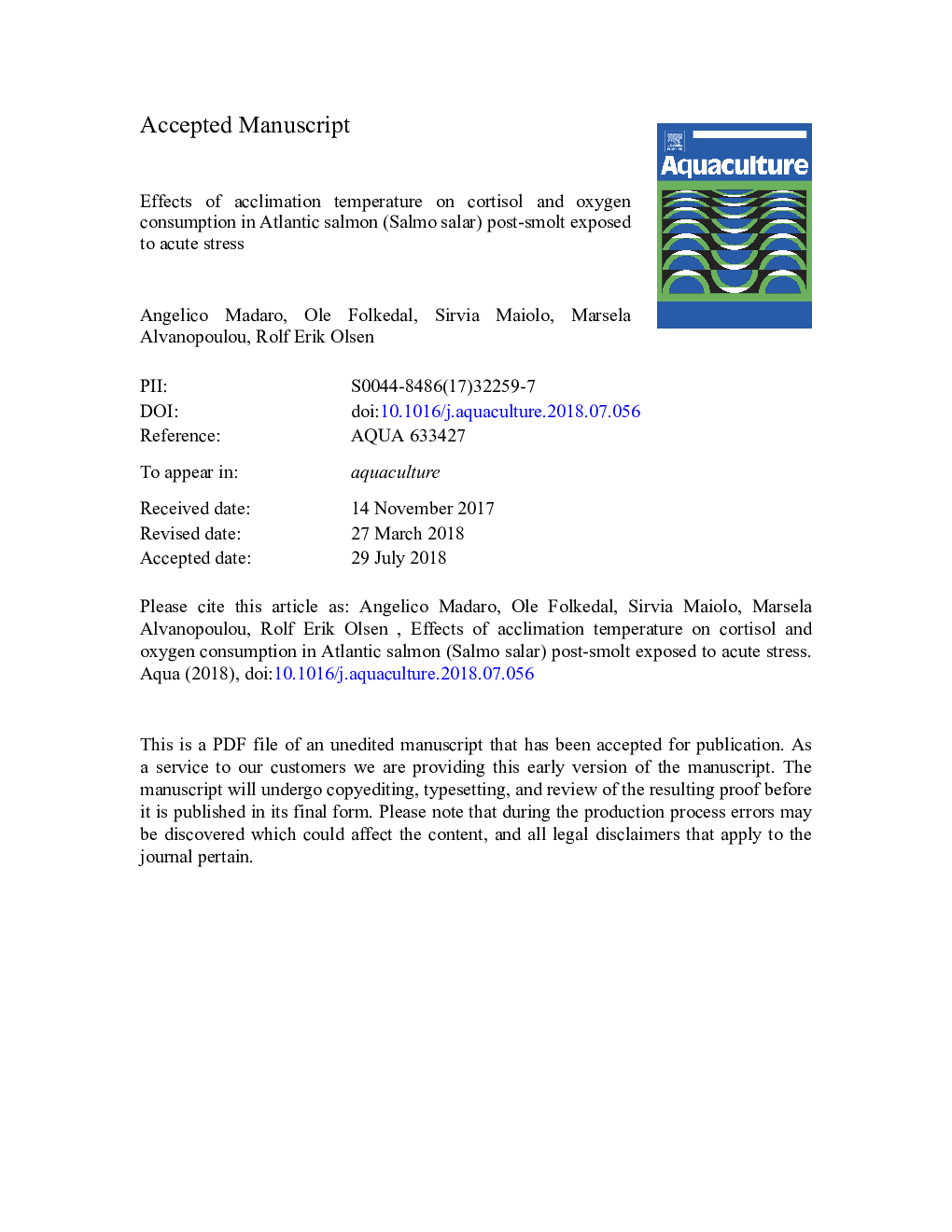| Article ID | Journal | Published Year | Pages | File Type |
|---|---|---|---|---|
| 8492962 | Aquaculture | 2018 | 18 Pages |
Abstract
Increased cortisol production and oxygen consumption are commonly used as indicators for stress in most fish species. For comparative studies measuring acute stress responsiveness, it is often assumed that the cortisol is sampled at peak response. However, the effect of acclimated temperature on cortisol response is largely unknown, and so is also the dynamics of oxygen uptake following stress. In the present study we acclimated Atlantic salmon post-smolt to four different temperature within the species relevant temperature spectrum (4, 8, 12 and 17â¯Â°C), and applied an acute stressor of 60â¯s of confinement. Cortisol, as measured in water, was sampled before and up to 360â¯min following the stressor, while oxygen consumption rates was estimated per minute. Basal cortisol production increased significantly with temperature, which must be considered when calculating the cortisol response per se. The cortisol response followed a Gaussian pattern, where the amplitude (max value) increased with temperature while the curve width (time before peak and recovery) decreased. Also, the total amount of cortisol released in response to the stressor increased with temperature. The cortisol peak at 4, 8, 12 and 17â¯Â°C was respectively measured after 123.75â¯Â±â¯7.2, 67.5â¯Â±â¯9.7, 56.25â¯Â±â¯3.75 and 33.74â¯Â±â¯3.75â¯min. The stress induced peak in oxygen uptake increased with temperature in an exponential manner, and both peak value and the total oxygen uptake above baseline levels was three times higher at 17 than at 12â¯Â°C, while the total oxygen uptake was similar between 4, 8, 12â¯Â°C. This strong difference in oxygen uptake between 12 and 17â¯Â°C was not reflected by the cortisol levels, and suggests that salmon are extra vulnerable for creating hypoxic conditions when stressed at high temperature. The current work suggests when to sample cortisol for attaining peak values at a given acclimated temperatures in salmon post-smolt. This should allow for better comparison of cortisol values between studies.
Related Topics
Life Sciences
Agricultural and Biological Sciences
Aquatic Science
Authors
Angelico Madaro, Ole Folkedal, Silvia Maiolo, Marsela Alvanopoulou, Rolf Erik Olsen,
